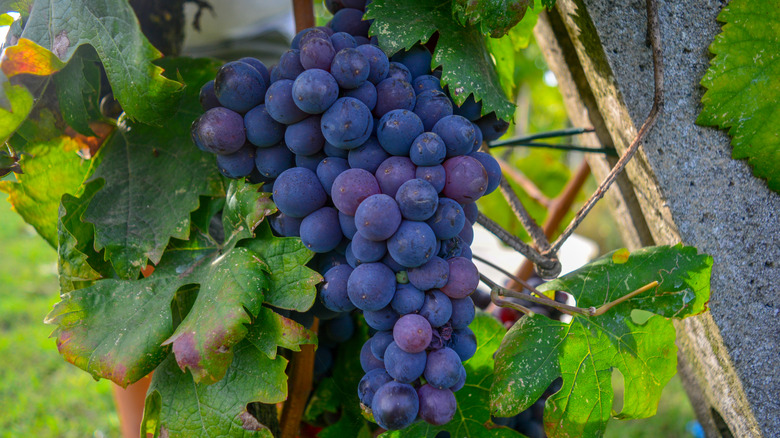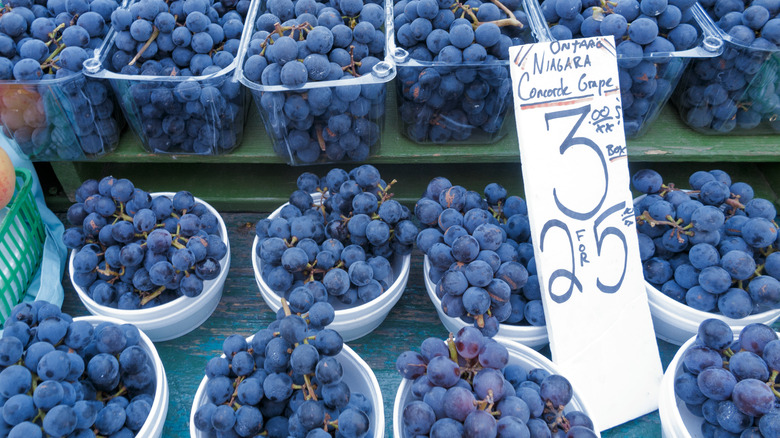Why You Can't Usually Find Concord Grapes In The Grocery Store
America is a country that loves its grapes. They are sweet and juicy with a skin that keeps hands from getting sticky, which all make for a delicious snack any time of the year, and particularly in summer when it's fun to freeze them. And the variety of grapes is vast, from the green table grape to the elongated, black Moon Drops. But there is so much more grapes can do, like be used in cooking, turned into jelly, and, of course, crushed into wine.
For the most part, you can walk into a grocery store all year long and find a few different varieties of grapes available, which are typically green, red, and maybe a dark purple variety. Some are seasonal, like The Grapery's coveted Cotton Candy brand, so you won't see them regularly, but fans know when to expect them on store shelves. According to Minnetonka Orchards, most grapes that we eat were not originally grown on domestic soil and were brought to America from Mediterranean countries.
Interestingly enough, the one native grape that we do have, the Concord, is usually not found in stores. Concords are exceptionally sweet and are prized for making jelly and juice, and they are also great for eating. So what gives? It turns out that they're not as tough as their overseas cousins.
Not-so-tough skins
Minnetonka Orchards explains that, in 1854, Ephraim Wales Bull developed the Concord grape in Concord, Massachusetts after he cultivated a wild, New England grape. Part of what makes the Concord so popular in cooking and making juice is the fact that the pulp slips out of the skin with very little effort. But this is precisely why the grape doesn't hold up well against transport or handling in supermarkets. Jostle them around too much and you'll split the fruit's skin, resulting in a sticky, slimy mess. Still, when the grapes are in season, they can make an appearance at grocery stores, particularly if they come from a nearby grower. Bulk Natural Foods warns buyers to expect some split skins and even juice at the bottom of the seller's containers due to the grape's delicate nature.
Concord grapes have a short harvest season, typically lasting just through the month of September, according to Bon Appétit. But if you live in a state that grows the varietal on a mass scale, like Washington, New York, Michigan, Pennsylvania, and Ohio, you're more likely to find them at farmer's markets or roadside produce stands during that time (via the Concord Grape Association). It is also a popular grape for home-growing, offering you the opportunity to enjoy these treats right off the vine, but Minnetonka Orchards says to be patient, as the vines often won't produce for a few years.

